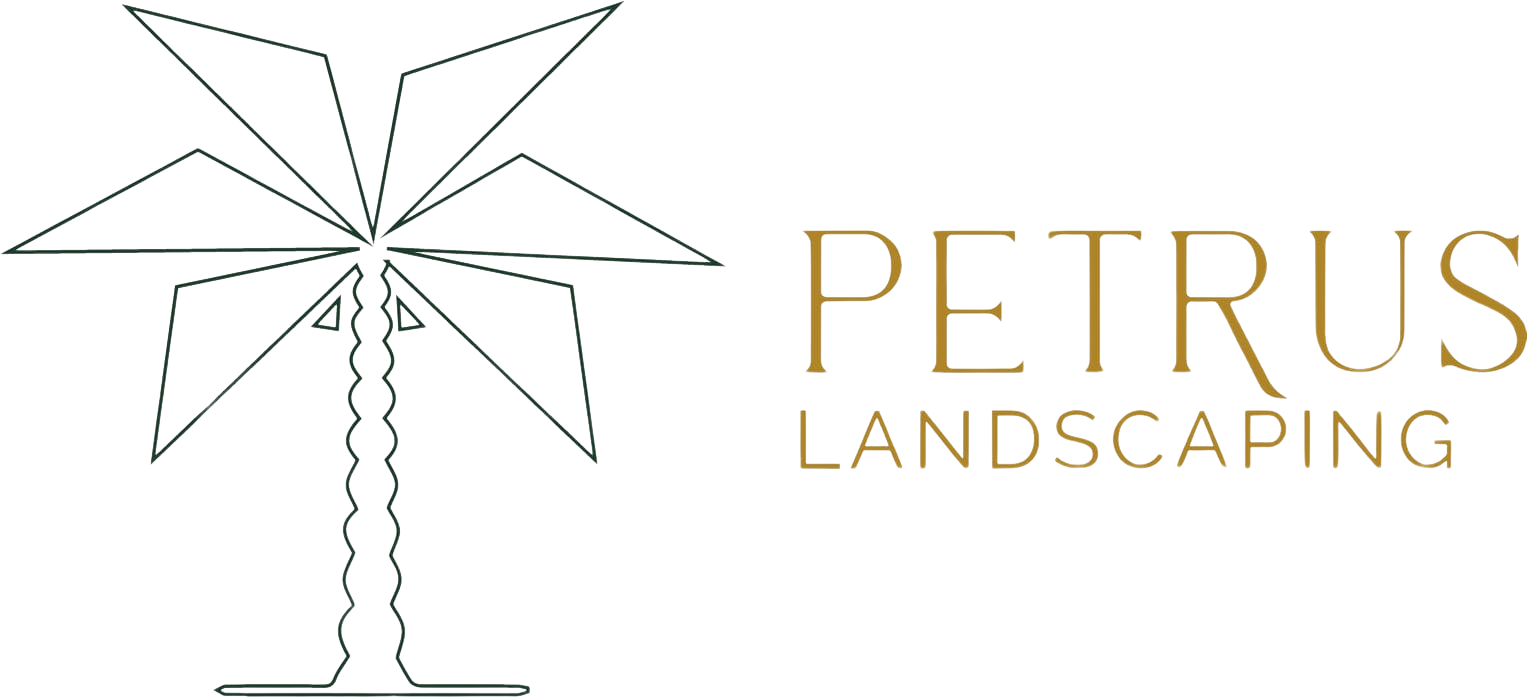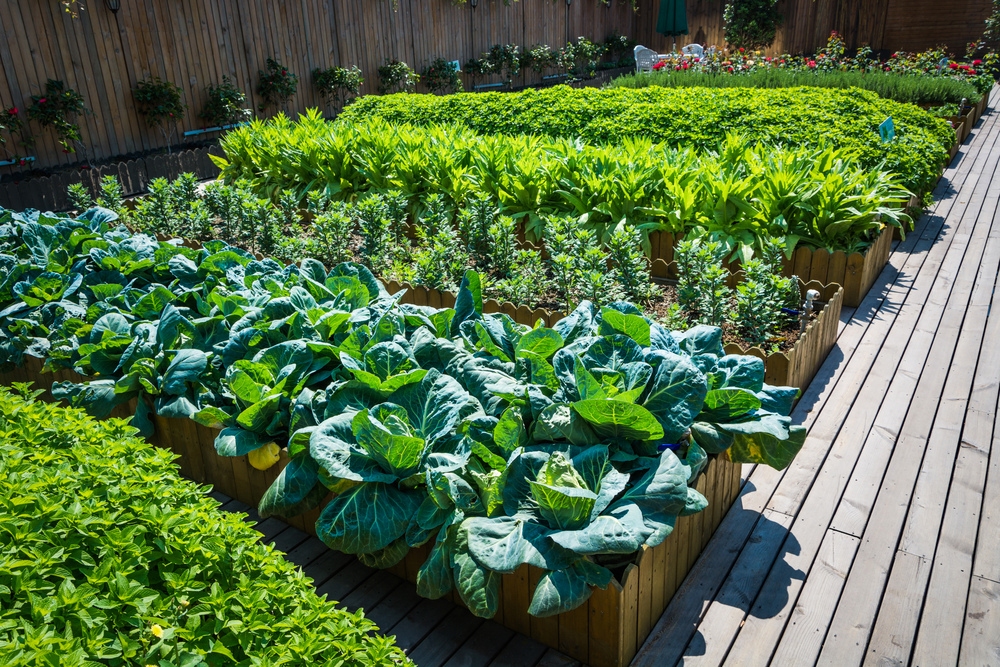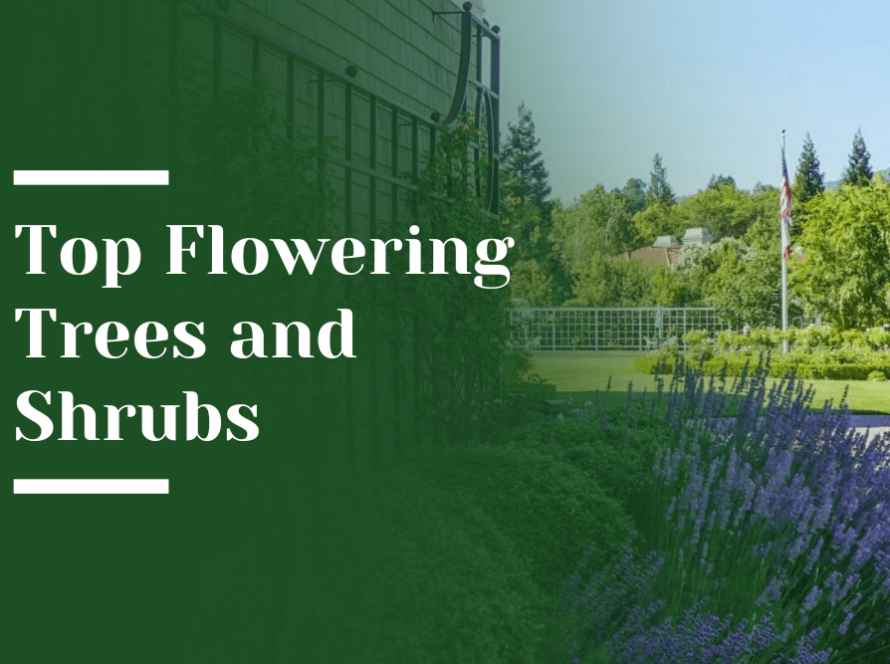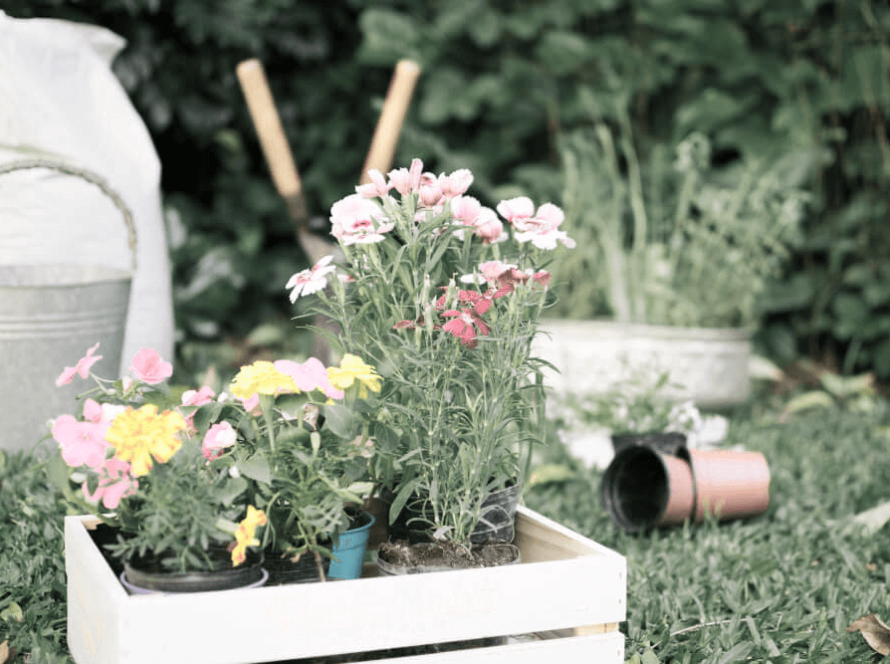Since ancient times, the idea of incorporating edible plants into beautiful landscaping designs has existed. The Babylonians and Ancient Greeks punctuated their colorful gardens with edible landscape plants, often planting ornamental and food-producing crops side-by-side.
While edible landscaping fell out of fashion in modern times, it experienced a resurgence during World War II when citizens were encouraged to become more self-sufficient by planting individual “victory gardens.” Today, more and more sustainability-minded people in the Bay Area are discovering the benefits of edible landscaping. They choose to populate their outdoor spaces, vertical gardens, and estate grounds with eco-friendly food-producing plants.
This article introduces this trend and provides ideas for incorporating indigenous and climate-friendly edible landscape plants into your Bay Area outdoor space design.
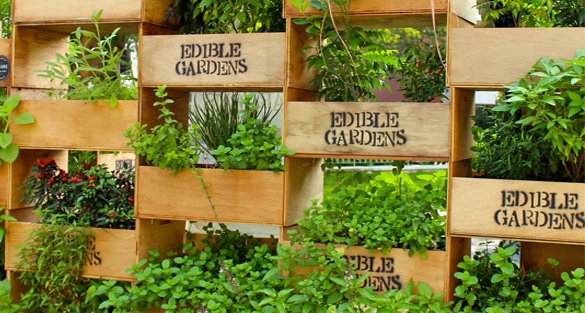
What is Edible Landscaping?
Edible landscaping, sometimes referred to as foodscaping, is the sustainable practice of incorporating vegetables, fruit-bearing foliage, culinary herbs, and flowers you can eat into your landscape design. This marriage of farming and ornamental landscape design is becoming increasingly popular throughout the Bay Area as more residents and business owners embrace the idea that a lavish landscape can appeal to all the senses, including taste.
But don’t confuse edible landscape design with planting a plain old vegetable garden. A regular vegetable garden patch involves strategically planting rows of select vegetables and fruits to enhance yield. An edible landscape vegetable garden places equal emphasis on luxury, beauty, and bounty. Edible landscape design combines edible plant life with ornamental elements to achieve a particular design aesthetic.
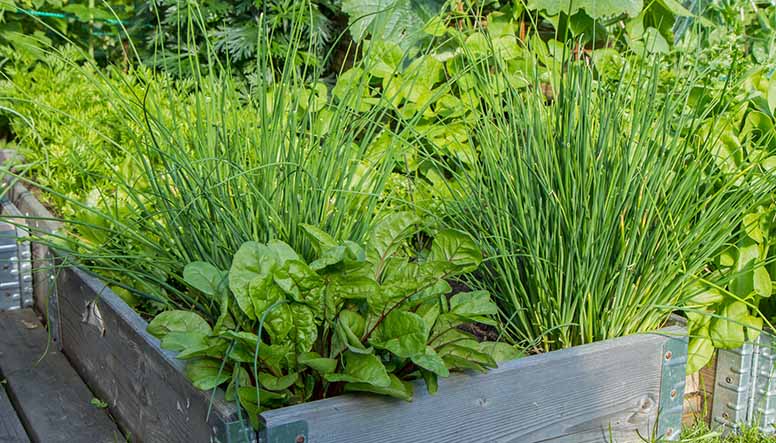
How to Plan an Edible Landscape Design
Great edible landscape design begins with selecting the best edible landscape plants to thrive in your local environment. You’ll want to consider several factors, including climate, terrain, the local wildlife, and, of course, color, layout and design.
Climate Considerations
Local weather plays an essential role in landscape design. Climate considerations will determine which plants will thrive and which won’t survive. The Bay Area is unusual because it has a wide variety of climates within just a few miles of each other.
San Francisco, for example, is only seven square miles but has several microclimates within its city limits. Temperatures in some San Francisco neighborhoods may vary by as much as nine degrees Fahrenheit from block to block. For example, homes near the coast are in a cool, moist maritime climate, while the Bay area has a more Mediterranean feel, with warmer, drier weather.
Working with a local landscaper who knows the terrain and climate will help you choose the right plants that work in your property’s microclimate.
Considering Local Wildlife
Thoughtful landscaping can help to maintain biodiversity, especially if you design around local edible plant life. You want your outdoor design to appeal to wildlife, but you also want to ensure you can take advantage of the bounty of your edible landscape.
Think about the habitat you’ll be creating. Will your landscaping attract bees and birds? Or are you making a feeding farm for bears and other animals? Think about what food, water, land cover, and breeding habitat you might be creating and whether you will attract the wildlife you want on your property.

Choosing the Right Colors
Consider how different hues can play off each other when designing your landscape. Think about how adding specific colors might affect the appearance of surrounding structures, such as your hour house or the adjacent grounds. Consider, for example, how:
- You can intersperse different flowering plants so that soft pink, blue, or purple flowers temper the brightness of yellow blooms.
- You can use contrasting leaf colors to make a bold statement or set a soothing mood with a more subtle monochromatic scheme.
- Small white flowers or ground covering can help transition from one section or theme to the next.
- Leverage seasonal changes to enhance your design.
Understanding Layout and Design
Your landscaping — even with a focus on edible plants — should reflect your personality and desired aesthetic. That is where layout and style come into play. If you are designing on land adjacent to your estate, consider your home’s exterior and interior and how your landscape design will mesh with them. Here are some landscape design styles to consider:
- Mediterranean style, with design elements including plants with plenty of texture, color, and structure accented with terra cotta pots, tiered fountains, statuary, Roman columns, and even a bocce ball court.
- Japanese style, with a focus on nature and harmony, thoughtfully incorporating the use of rocks, running water, and plenty of green plants in varying sizes, shapes, and textures.
- A country style that is both quaint and functional, incorporating dense plantings and ground cover, plenty of colorful flowers, and traditional building materials or farming implements, all put together to create a charming and relaxed atmosphere.
The style options can be overwhelming, which is where an experienced landscape design team can help you create your perfect outdoor space.
15 Edible Landscape Plants Perfect for Bay Area Homes
When choosing the right edible landscape nursery plants for your Bay Area estate gardens, consider both form and function. You’ll want a variety of fruits, vegetables, and herbs. Don’t be afraid to experiment with new tastes and textures from the many types of landscape edible shrubs, plants, and trees native to the San Francisco Bay and surrounding areas.
According to the California Native Plant Society, California has 6500 native plants, many of which are edible and will thrive in Bay Area climates and soil conditions. The following are a few of our favorite native edible landscape plantings that add variety and beauty to local landscape designs.
1. Blue Elderberry
Creating a distinct entrance Blue elderberry (Sambucus nigra ssp. caerulea) is a small deciduous tree known for its tasty fruit. Its white flowers attract butterflies in the spring. Elderberries are a great addition to any Bay Area location as they are easy to grow in soil and do well in sunny and shady terrain.
2. California Hazelnut
The California hazelnut (Corylus cornuta ssp. californica) is a small tree with an attractive vase-like shape. Its nuts are considered delicious, but you’ll need to plant several trees to get a harvest. The female tree has pretty red flowers, and the male plant has whitish flowers that hang down from the branches in clusters called catkins.
3. California Onion
The California onion (Allium dichlamydeum and unifolium) is nothing, if not prolific. It will propagate wildly, so you probably want to keep these in pots to control quantity. The onions have pink flowers, stems, leaves, and bulbs that are all edible. Give them lots of sun and slow-draining soil, and you’ll have plenty of onions to enjoy throughout the year.
4. California Poppies
One of the benefits of California poppies (Eschscholzia californica and maritima) is that they are annuals. California’s state flower produces edible seeds often described as having a toasty flavor that can be enjoyed year after year. One of the area’s most desirable low-maintenance landscape edible plants, these stunning orange flowers attract plenty of bees during springtime.
5. Chaparral Currant
The chaparral currant (Ribes malvaceum) offers a tasty fruit and leaves that add a bit of spice to peppermint tea. A deciduous shrub, it boasts bright pink flowers that are a favorite of hummingbirds and bees. This shrub thrives in partial shade and on the swaths of serpentine rock found throughout San Francisco.
6. Coyote Mint
The edible minty leaves and lavender flowers of the coyote mint (Monardella villosa) make a tasty tea that soothes the stomach when gently seeped in cold water. Coyote mint is a perennial shrub that prefers full sun and ample drainage. Unlike other mint varieties, coyote mint will not aggressively spread, so you don’t have to worry about it taking over your landscaping.
7. Elegant Brodiaea
Elegant brodiaea (Brodiaea elegans) is an excellent addition to your edible landscaping plant list. The plant has purple flowers that taste like crisp lettuce and can be eaten raw. Their bulbs, while also edible, must be cooked before eating. This plant does well with little sunlight. The related dwarf brodiaea is a great choice to add some colorful and edible ornamentation atop your garden rocks.
8. Huckleberries
The huckleberry (Vaccinium ovatum) is a richer and more complex fruit than its humble cousin, the blueberry. The bushes produce white flowers that attract bees — always a plus when considering any sustainable plantings. They grow slowly but well in damp areas that are primarily shady but offer just enough sunlight for them to thrive.
9. Hummingbird Sage
As you’d expect, hummingbirds love this type of sage (Salvia spathacea). Humans love them as well. Their leaves are great for cooking, and their flowers taste like fruit punch. Even their seeds can be eaten. Plant it in shady areas, but it will need at least some sun to bloom.
10. Monkey Flower
The monkey flower (Clinopodium mimuloides) gets its name from its mouth-shaped flower that is said to resemble the face of a monkey. Also a hummingbird favorite, the monkey flower’s red tubular flowers and leaves are edible and have a minty flavor.
11. Salmonberry
The hot pink flowers of the salmonberry (Rubus spetabilis) will add a bit of pizzazz to your Bay Area garden landscape while attracting bees. The fruits of this berry are a bit more tart than their raspberry and blackberry cousins and are a favorite of local birds. They can stand independently but do well on a trellis and need a bit of sun to bear fruit.
12. Thimbleberry
The thimbleberry (Rubus parviflorus) is a delicious fruit reminiscent of the raspberry. It’s a fast-spreading deciduous plant with white flowers that bees adore. It’s an excellent choice for places that are otherwise hard to plant. You can grow thimbleberry in its preferred sunny, damp environment, but you’ll also do well planting it in shady areas. The berries turn from white to red when they ripen. That can occur in one day, usually toward the end of June, so keep an eye out if you want a bountiful harvest.
13. Violets
Purple and yellow violets (Viola adunca ssp. adunca and pedunculata) are a familiar ground cover in Northern California during the summer. Their highly fragrant and tasty leaves are great in desserts and as garnishes for refreshing drinks.
14. Western Wild Ginger
Western wild ginger (Asarum caudatum) is a beautiful dark evergreen ground cover that does exceptionally well in dark shade. Its dark red flowers and savory and sweet raw roots are edible, but it’s advisable to consume the plant in moderation. While western wild ginger is often used as a spice for added flavor — and is said to contain medicinal properties — it is considered toxic if consumed in high doses.
15. Yerba Buena
Yerba buena (Clinopodium douglasii) loves fog, making it a perfect edible and evergreen ground cover choice for any San Francisco landscape design that contains slow-draining soil. Its edible leaves taste like a cross between mint and oregano. Its little white flowers act as bee magnets in late spring. Not only is it used to flavor food, but it’s a staple ingredient in many perfumes and herbal medicine concoctions. It is said to have properties that aid digestion, relieve cold symptoms, and soothe pain.
Let Petrus Help You Create the Edible Landscape of Your Dreams
Edible landscape plants offer a delightful fusion of beauty and practicality. These versatile plants serve a dual purpose, enhancing the aesthetic appeal of your surroundings while providing nourishment. They transform traditional gardens into abundant havens, from fruit trees and berry bushes to herbaceous borders and edible flowers. Their vibrant colors, diverse textures, and enticing flavors make them an enticing addition to any landscape, elevating the concept of sustainability and self-sufficiency in gardening.
As premier local landscape designers, the professionals at Petrus Landscapes have the expertise and experience to help you create and lay out an edible landscape design that will be beautiful and sustainable. From selecting the edible plants that will thrive in your home’s microclimate while offering exquisite beauty and culinary appeal to ensuring your aesthetic is honored, the Petrus designers will ensure your vision becomes a reality.
Whether you’re interested in transforming your existing outdoor space into an eco-friendly edible masterpiece or designing a landscape concept from scratch, Petrus can guide you every step of the way. By handling all the details from design to installation to maintenance services, we do the heavy lifting so you can focus on turning your edible landscape ideas into the garden of your dreams.
With over 30 years of service, Petrus builds and maintains landscapes for some of the most extraordinary estates in the country. We offer landscape and landscaping designs in the greater Bay Area, from Los Altos to San Jose. Contact us today to schedule a consultation and get started on your Bay Area landscape design project.
